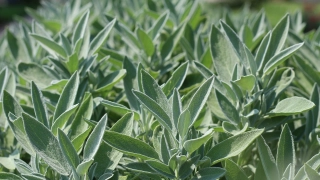Galbanum: Taste Profile, Aroma, Benefits and Health Risks
Galbanum is a resin obtained from the Ferula plant, native to Iran and the Middle East. Known for its strong, herbal, and slightly bitter scent, galbanum has been valued in perfumery, traditional medicine, and occasionally in culinary applications for its unique, complex flavor profile.
What does Galbanum taste like?

Galbanum’s flavor is intensely green, herbal, and somewhat bitter, with undertones that are both earthy and resinous. Its taste is quite unique and not commonly found in everyday culinary ingredients, offering a sharp and invigorating character.
- Taste: Strongly herbal and slightly bitter, with green, grassy notes and a sharp, resinous edge.
- Aroma: Potent and green, with earthy and woody undertones, often described as a mix of pine, grass, and wet earth.
- Texture: Thick, sticky resin when fresh, typically used in powdered or oil form.
In-Depth Flavor Analysis of Galbanum
Galbanum’s unique flavor and aroma come from a high concentration of terpenes, natural compounds responsible for its sharp, green, and slightly pine-like character. The bitter, earthy notes provide a refreshing contrast, making it distinct from more common herbs and spices.
When used in small amounts, galbanum imparts a green, crisp bitterness, akin to freshly crushed leaves or pine needles, which can add complexity to savory dishes and herbal blends. Its sharpness makes it similar to other intense herbs like sage or rosemary but with a more resinous, earthy foundation that offers a bold, forest-like quality.
How Can Galbanum Be Used in Cooking?
While rare in culinary uses due to its intense flavor, galbanum can be used sparingly to add complexity to herbal blends and infuse dishes with a refreshing bitterness:
- Herbal Blends: Adds depth to herb mixtures, particularly in Middle Eastern or Mediterranean cuisine.
- Spice Rubs: A small amount in spice rubs or marinades for meats and fish provides a unique herbal bitterness.
- Infusions: Occasionally used to infuse oils or spirits, imparting an earthy, green complexity.
- Soups and Stews: A hint of galbanum can add layers of flavor to broths, particularly those with root vegetables and herbs.
Health Benefits of Galbanum
Galbanum has been used in traditional medicine for centuries and offers several potential health benefits:
- Anti-inflammatory Properties: Traditionally used to reduce inflammation and support joint health.
- Digestive Support: May stimulate digestion and reduce digestive discomfort.
- Antimicrobial Effects: Known for its antimicrobial properties, often used in natural remedies.
- Respiratory Health: Historically used to relieve respiratory issues, particularly congestion and coughs.
- Relaxing Properties: Known in aromatherapy for its calming and grounding effects.

Are There Any Precautions When Consuming Galbanum?
Galbanum should be used sparingly, especially in culinary applications:
- Allergic Reactions: Those with sensitivities to plants in the Apiaceae family (like carrots or celery) should exercise caution.
- Strong Flavor: Galbanum’s flavor can overpower dishes if used excessively; a very small amount is typically sufficient.
- Pregnancy and Medical Conditions: Consult a healthcare provider before use, as galbanum may not be suitable for pregnant women or certain health conditions.
How to Choose and Store Galbanum?
- Choosing: Look for high-quality galbanum resin, oil, or powder from reputable sources.
- Storage: Store in an airtight container in a cool, dark place to preserve its potency and aroma.
Fun Facts About Galbanum
- Ancient Use: Galbanum has been used for over 2,000 years in perfumery, incense, and traditional medicine.
- Biblical Reference: It is mentioned in ancient texts, including the Bible, as a valuable incense.
- Distinctive Aroma: In perfumery, galbanum is highly valued for its green, sharp scent, adding complexity to fragrances.











